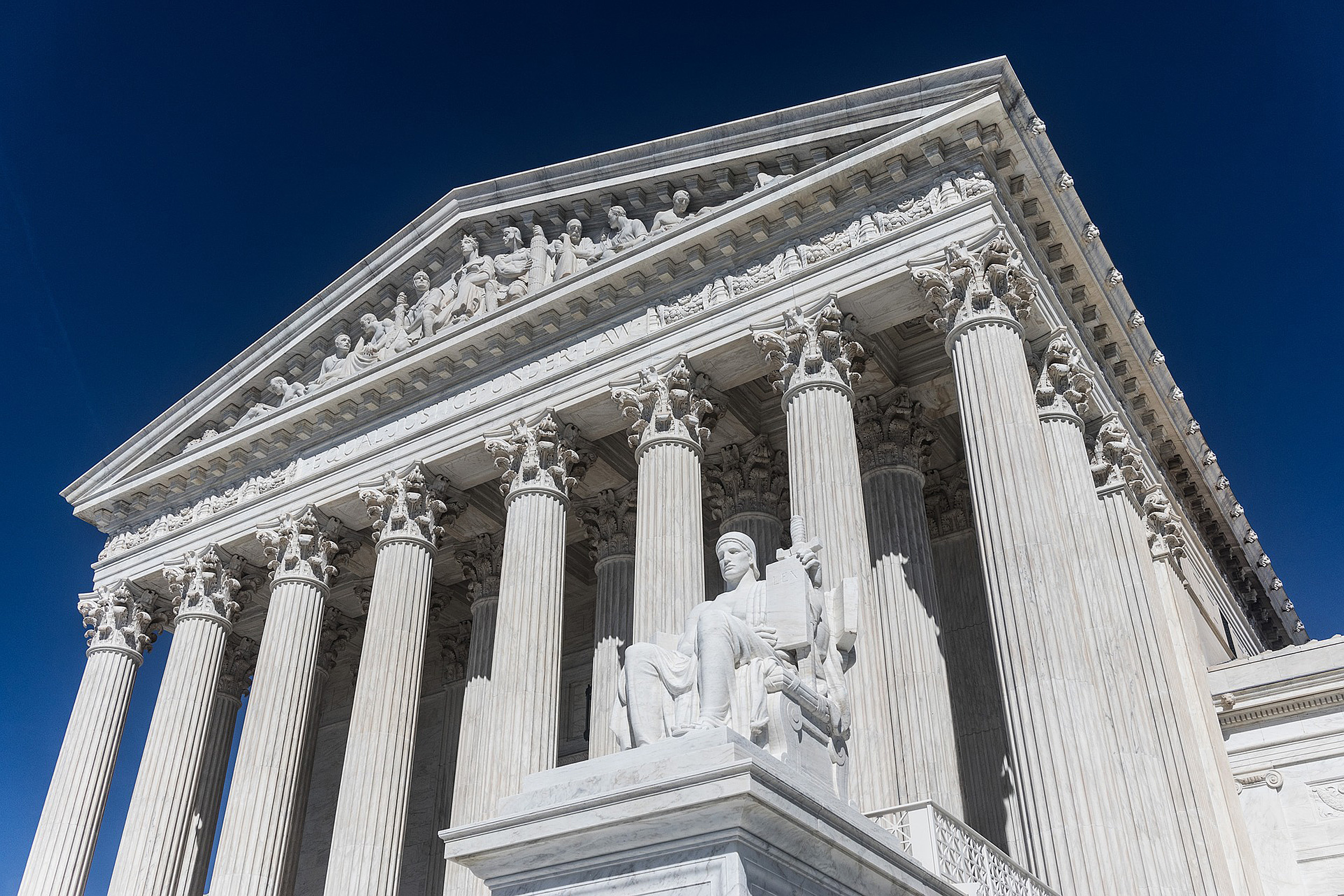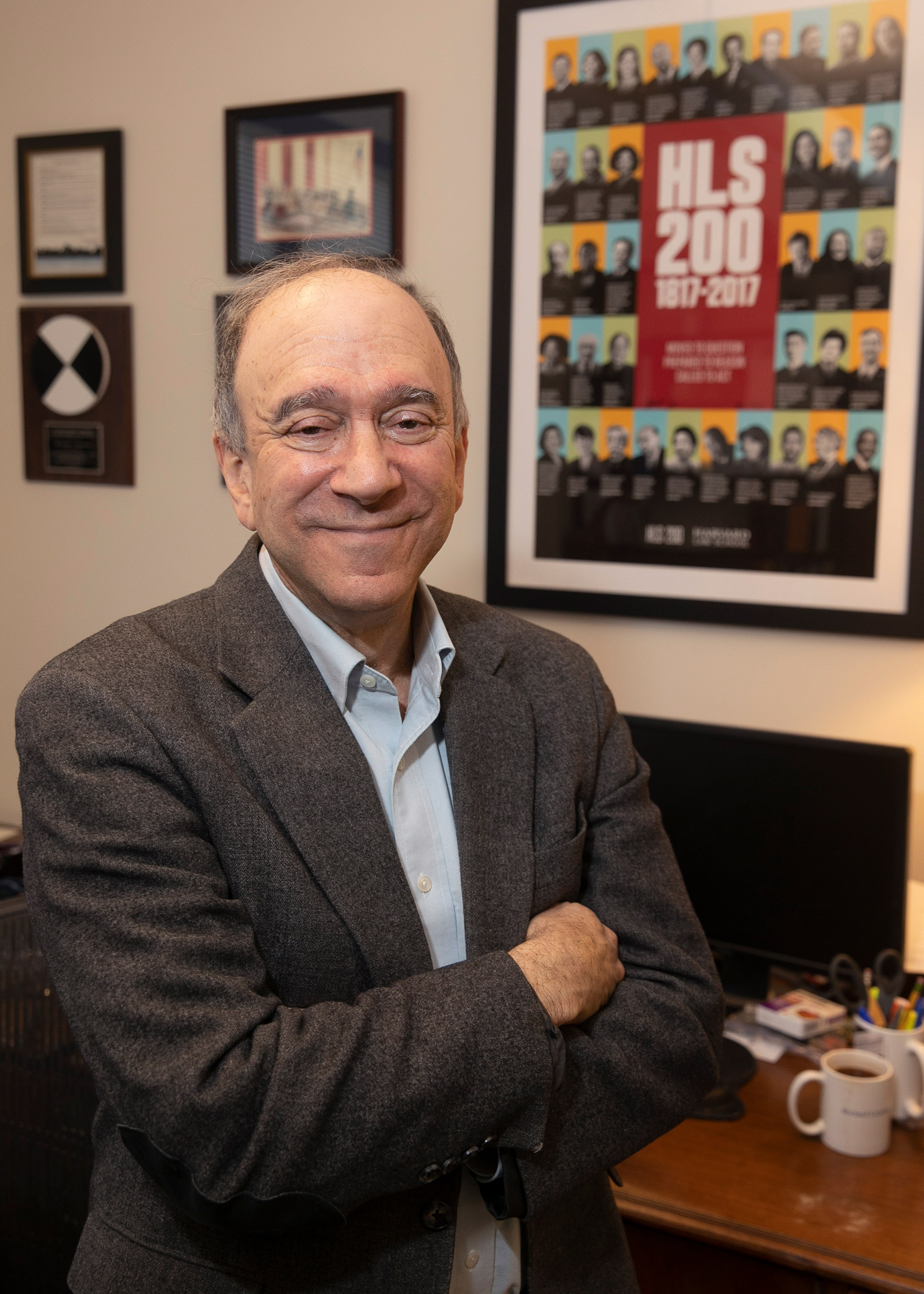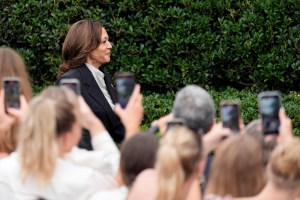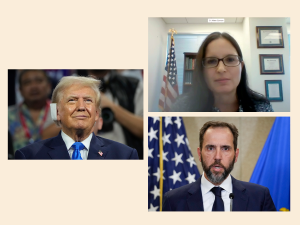
Mark Thomas/Pixabay
How and why the Supreme Court made climate-change history
Massachusetts v. EPA opened the door to environmental lawsuits
Hanging on the wall of his Harvard Law School office, Professor Richard Lazarus has a framed copy of the 2007 Massachusetts v. EPA ruling signed by Justice John Paul Stevens.
It is a symbol of the significance of the case for Lazarus, who has written the book “The Rule of Five: Making Climate Change History at the Supreme Court,” which tells the inside story of the landmark environmental case.
The Gazette sat down with Lazarus, a Supreme Court advocate and the Howard and Katherine Aibel Professor of Law, before the coronavirus quarantine to talk about his book, his passion for environmental law, and the legal strategy behind the environmentalists’ victory.
Q&A
Richard Lazarus
GAZETTE: When did you first have the idea for writing a book about Massachusetts v. EPA?
LAZARUS: I’ve wanted to write a book like this for several decades, from the time when I was working in the Solicitor General’s office and litigating cases in the Supreme Court, back in the 1980s. I knew I wanted to bring to life Supreme Court advocacy and make people realize how fascinating, important, and exciting it can be on both sides of the lectern. On one side, there are the advocates, who are writing briefs and presenting oral arguments, and on the other side, there is advocacy among the justices themselves when they’re trying to persuade their colleagues. The question became, what case I could write about? When the Supreme Court decided Massachusetts v. EPA in 2007, I went, “Bingo.” I knew I’ve got my case because it brought together two things I do as a law professor and as a scholar: one is that I write and teach about Supreme Court advocacy and decision-making, and two, my real passion is environmental law. There’s no greater problem that overwhelms us these days in environmental law than climate change. And the reason why I chose to write about Massachusetts v. EPA is because the court gave environmentalists their biggest win ever. That’s when I knew that I had my case.
GAZETTE: Some people say that the ruling is as significant to environmental law as Brown v. Board of Education was to school integration. What is your take?
LAZARUS: First of all, there’s no Supreme Court ruling as significant as Brown v. Board of Education, which is the most significant Supreme Court decision perhaps ever because it established that segregation in public schools is unlawful as a matter of constitutional law. Massachusetts v. EPA is the most significant decision for environmental law because not only did the Supreme Court take the case and then rule in favor of the environmentalists, but also because the rule in itself had huge sweep and impact. It’s because of Massachusetts v. EPA that we have the 2015 Paris accord, where 195 nations came together to agree to reduce greenhouse-gas emissions. That would not have happened without the Massachusetts case. The decision itself, when it came down to it, was significant, and its aftermath, in lawmaking, has been massive.
GAZETTE: Many people were skeptical of a positive outcome when the lawsuit was first filed in 1999 by attorney Joe Mendelson. What were the factors that led the Supreme Court to rule in favor of Massachusetts?
LAZARUS: There are a few things to focus on. One is some extraordinary personal courage by several individuals, combined with their great skill as lawyers, and on the other side, there were really bone-headed, stupid moves. Those together were probably necessary. It began in 1999 with Joe Mendelson, who worked for a shoestring public-interest organization no one had ever heard of. Mendelson, who said he’d had enough because nothing was happening with the promises of Clinton and Gore to address climate change, stayed up late at night drafting this petition, and everyone was saying, “Joe, don’t rock the boat.” But Joe filed the petition. It took enormous courage on his part, personal and professional, to do what he did. And he was not the only one. Jim Milkey, a career attorney with the Massachusetts Attorney General’s Office, decided to take this case to the Supreme Court. Everyone was telling him, “Don’t do it.” He did it anyway.
On the other side, you have some colossally stupid decisions made during the Bush administration. George Bush had campaigned on a pledge to regulate greenhouse-gas emissions in the U.S. and put several committed people in his cabinet: Christine Todd Whitman as EPA administrator, Paul O’Neill as Secretary of Treasury, Colin Powell and Condoleezza Rice as Secretary of State. All of them thought this was a pressing issue we had to address, but Vice President Dick Cheney outmaneuvered them. He got Bush to sign a letter to Congress, not just saying, “I’m not going to regulate greenhouse-gas emissions,” but saying that the government did not have the authority to do it. That was really stupid, and he did it without consulting any lawyers, so Cheney overreached. Then several people in the Bush administration declined to listen to the advice of their career lawyers about what to say, how to argue, and how to present their case before the courts. As a result, while they managed to squeak out a win in the U.S. Court of Appeals for the D.C. Circuit, they presented a far weaker case than they had to before the Supreme Court.
Richard Lazarus breaks down the legal strategy behind the environmentalists’ victory in the landmark court case.
Jon Chase/Harvard Staff Photographer

GAZETTE: Your book provides a window into the inner workings of the Supreme Court. What does it take to win a case before the Supreme Court?
LAZARUS: It takes a highly skilled lawyer. There’s no substitute for that. It’s what they say about Carnegie Hall. It takes practice, practice, practice. If you argue before the Supreme Court, you have to recognize you’re going to have nine very smart lawyers asking you questions. They ask about 50 to 75 questions in 30 minutes, and you have very little time to answer them. You have to be prepared for all the questions and you have to figure out how to answer the questions quickly and efficiently. You also have to know your justices. Of the nine justices, you have to convince five of them. That’s why the book is titled “The Rule of Five.” It’s all about training, how you frame an issue, and knowing that some arguments are weak, and others are strong.
GAZETTE: What went on behind the scenes of the legal strategy that led to the victory of the environmentalists?
LAZARUS: Coming in, the environmentalists knew that the fifth vote was Justice Anthony Kennedy, and they thought long and hard about how to keep those five votes. They understood their strengths, their weaknesses, and the other side’s weaknesses. They figured out what was the only thing they could possibly argue in a very targeted way to allow a win. And that worked. Sometimes advocates before the Supreme Court aren’t willing to acknowledge that something’s a little weak, and they try to pretend they have a strength they don’t have, and the court gets frustrated. Here, Milkey (HLS Class of 1983) started his oral argument with his strengths. When the court quickly pounced on him, identifying his weaknesses, he knew exactly the right argument to make, the only one he could make that could possibly win the case. Ironically, it was to de-emphasize in certain respects the fact this is a big climate-change case, and he turned it into good lawyering; focusing on administrative law and standards review. He made just the argument to win the case. At one point, Justice Ruth Bader Ginsburg said, “You really need to argue that? Because if you argue that all you win is X. You don’t win more than that.” Milkey said, “That’s our argument.” I’m sure environmentalists who had slept on the sidewalk outside the night before to hear their champion lecture the court about the importance of climate change were like, “He doesn’t sound like an environmentalist.” And that’s because Jim was being a really good lawyer. The best environmentalists who are lawyers are not the best environmentalists; they are the best lawyers.
GAZETTE: What role did the justices play in the outcome of the case? What happened between the oral argument on Nov. 29, 2006, and the ruling on April 2, 2007?
LAZARUS: That process is incredibly important, and it’s completely unseen. People don’t appreciate how important it is. When Milkey sat down, and the Chief Justice said, “The case is submitted,” that’s when the advocacy switched from one side of the lectern to the other side, where the justices were. It took a lot of advocacy within the Supreme Court to actually keep that vote of five necessary for the win. In general, what happens is that two days after the court hears an oral argument, the nine justices get together in a room, with no assistants, just the justices to discuss the case and vote. This time, they went around and the vote was five to four. Anthony Kennedy supplied the critical vote in favor of the environmentalists. At that point, though, it’s not a done deal. The Supreme Court ruling is not final until these five justices sign on to a written opinion, and the challenge is to write an opinion that can keep that vote intact. It’s not at all unusual for a justice to change his or her mind, and his or her vote. In this case, under the practices of the court, the senior justice in the majority decides who writes the majority opinion, and it was Stevens. He decided to write the opinion himself, and he wrote it in a way that looks like a group hug of Justice Kennedy. Stevens went out of his way to cite everything and anything Justice Kennedy has written in prior cases. It took eight drafts to bring Justice Kennedy over. By the 2000s, Justice Stevens had become the master of “the rule of five.” He had figured out exactly how to write things to keep their votes.
GAZETTE: Is that why you dedicated the book to Justice Stevens?
LAZARUS: Stevens gets Justice Kennedy and three others to join the majority of opinion to make it five. That’s not easy to do. That’s why I refer to him in the book as the “Jedi Master” of the rule of five. Stevens also wrote the opening paragraphs and they’re sweeping and make it all about climate change and about the pressing nature of the problem for the U.S. and the world. He actually writes a call to action.
I dedicated the book to him partly because of the huge role he played, both in voting the way he did and in crafting the opinion and getting Kennedy’s vote. The other reason is that I met with him. He was the one justice I talked to on the record for the book. I talked to several justices off the record and on background, but Justice Stevens spoke with me on the record, and he was just fabulous. The highlight of my research was not just what I learned from him, but spending time with him down in Florida. Meeting Justice Stevens was a joyful experience. We were supposed to meet one more time, and he died about a week before our meeting.
“The best environmentalists who are lawyers are not the best environmentalists; they are the best lawyers.”
GAZETTE: In your book you described the oral argument as riveting. What were the highlights?
LAZARUS: I attended the argument because I was part of a group which had helped prepare Jim Milkey to appear before the court. At that point, I was well versed in the case, and like others in the courtroom, I listened to every word. When the justices do oral arguments, it’s the first time they discuss a case together. They’re learning each other’s views while we’re getting a hint of them from the questions they ask. I remember the moment when Justice Kennedy asked Jim, “What’s your best case?” And after Jim gave his case, Kennedy responded, “Well, I think your best case is Georgia v. Tennessee Copper.” Everyone in the courtroom sort of bristled, including myself, because Kennedy had just cited a case that no one in 42 briefs filed had referred to, and that meant he and his chambers had done their own research to figure out what they thought was the best case. For the environmentalists, that meant they likely had five votes at least for the right to bring the lawsuit. If they had lost on that issue, it would have meant that no one could ever bring lawsuits based on climate-change injury in any federal court in the U.S. Kennedy’s question was extraordinary, a source of good cheer, a little muted, but still, I was thinking, “Oh, oh, rule of five; we’ve got five votes.” I walked out of that courtroom, like many, very optimistic.
GAZETTE: How long did it take you to write the book? What were the challenges in writing it?
LAZARUS: I decided to write the book in 2007, but I didn’t start researching until 2015 because there are lots of things I do, including some Supreme Court oral arguments, and I teach and write Law Review articles. As an academic, writing this kind of book is somewhat of a luxury item.
In 2015, I started gathering documents. I had boxes filled with dozens of Freedom of Information Acts, public records requests, almost everyone’s email traffic, much to people’s horror — some were very unhappy with all the stuff that I had. But I wanted to have a good sense of what had happened behind the scenes on both sides. I spent probably a year and a half just compiling documents. In 2017, I had to take time off from it because I was running the Harvard Law School’s bicentennial. In early 2018, I began writing in earnest.
Writing a book for a popular audience was fun, but also challenging for me as a law professor. I had to write in a different voice. I had never written in this voice before, and what people advised me was to make it about people, not about ideas or theories. I also had to write it in an engaging and informal way. And every time I finished a chapter, I sent it to about five of my law students, some of whom had experience in college journalism, and asked them for their opinions. They were great. I think they liked editing their professor. I also sent a draft to three close friends who are not practicing lawyers, but love to read. One of them suggested that I make the chapters shorter. He said, “When I read a book, I’d like to feel a sense of accomplishment, and the chapters are a little long.” The book has 20 chapters because I shortened them, doubling the total number of chapters. That was very good advice.
GAZETTE: What lessons can attorneys, law students, and the general public learn from your book?
LAZARUS: There are several lessons. One is that a good lawyer can make a difference in the outcome of a case. The environmentalists were able to get the court to hear the case and they won because of good lawyering, there’s no doubt about it. The second lesson is that one needs to fight to make history. And the way to do it is by commitment and hard work, not just by sitting back and thinking that you’re on the right side of history and the others are on the wrong side. That’s not how it works. If you don’t fight for it, the history you favor is not going to happen.
The last lesson is that litigation is never enough in the world of environmental law. This case was a big win, and these kinds of wins are absolutely essential, but they’re never the end of the story. Every time you win a big environmental case, it’s inherently provisional because the same powerful forces that you had to beat in the Supreme Court don’t just disappear; they regroup and come back. It’s the nature of the beast. Environmental protection depends on win after win after win, over the longer term. That’s also true for climate change. You’ve got to keep those laws, get them enacted, maintain them, and enforce them, not just for one or two years but through decades. Litigation is essential, but it takes more than votes of justices to make transformative changes; it takes the votes of individuals. In the U.S. and in many countries, the ballot box is how we can really make transformative law. Brown v. Board of Education, decided in 1954, was incredibly important, and so was the Civil Rights Act of 1964. At the end of the day, it was a series of laws that Congress passed, spurred on by Brown v. Board of Education, which really led to more lasting change.
This interview has been edited and condensed for length and clarity.







